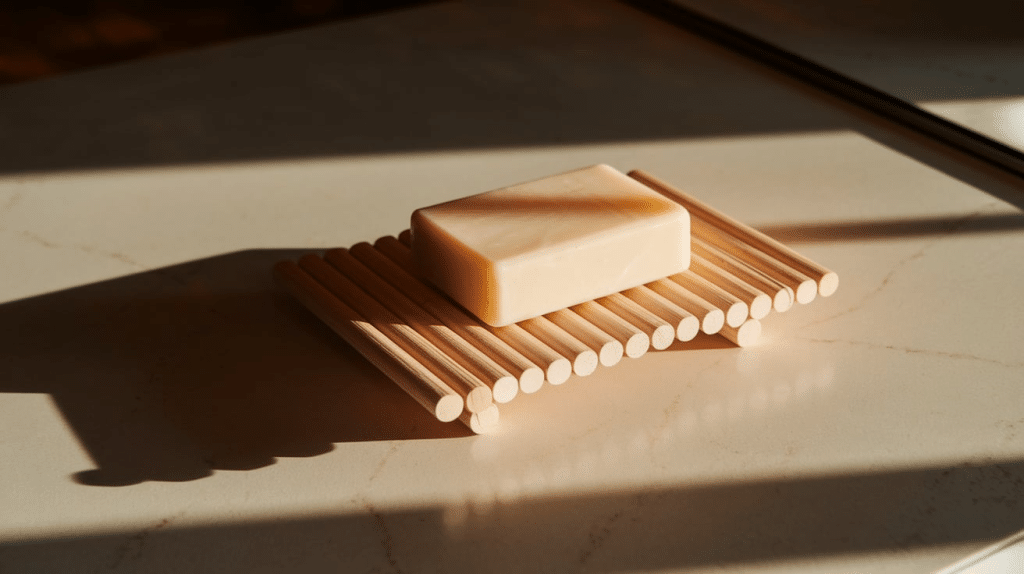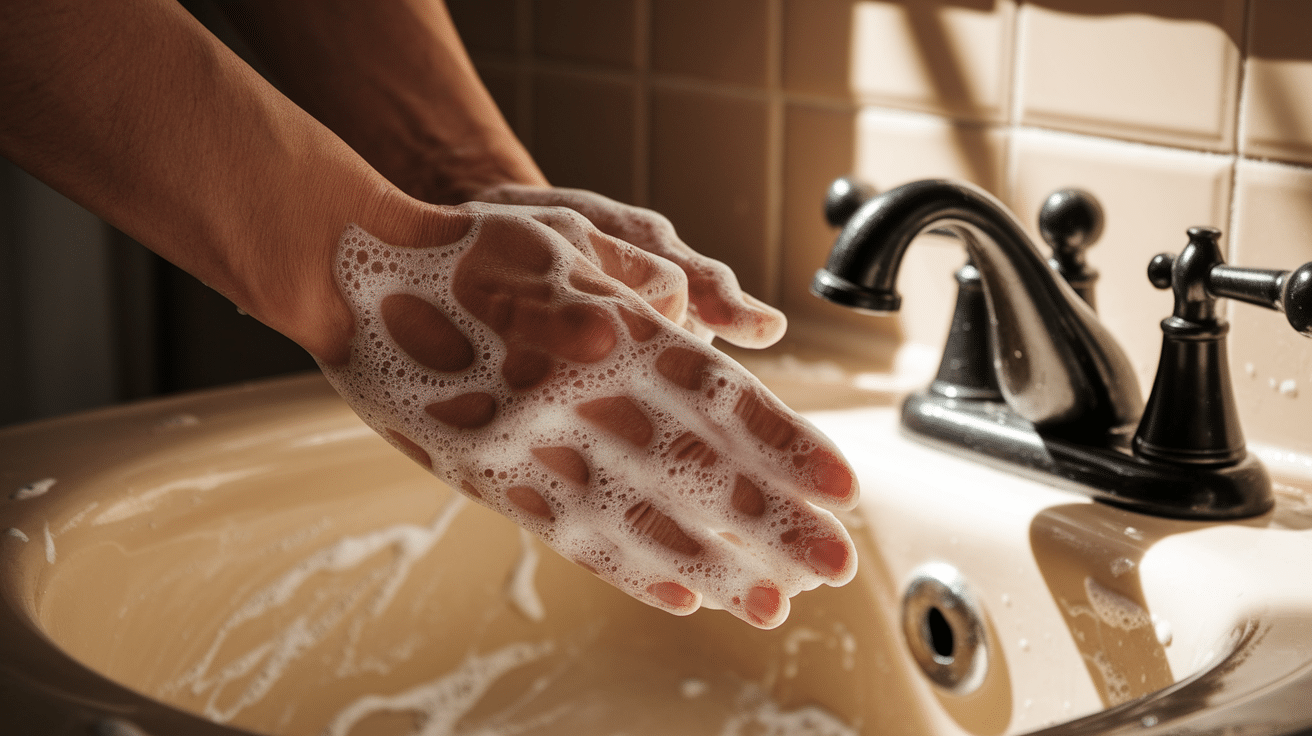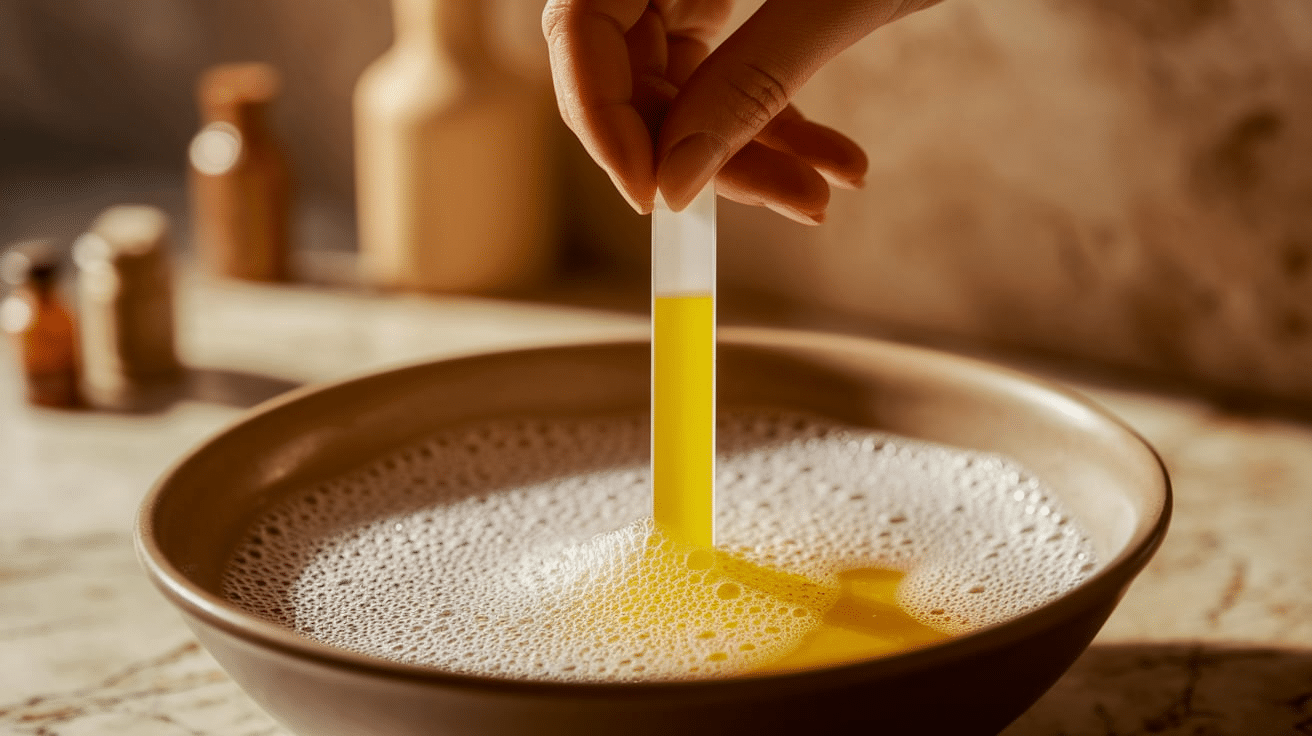Have you ever wondered what makes the soap you use everyday work?
Is it acidic, like lemon juice, or basic, like baking soda? Well, the answer is important because it affects how well soap cleans and how it feels on your skin.
Most soap is basic (or alkaline), which helps it break down oils and dirt. But understanding this can also explain why some soaps feel rough on your skin while others are gentler.
Let’s look at the surprising science behind soap and how it works.
Understanding Acids and Bases
Before determining whether soap is acidic or basic, it is essential to understand these fundamental chemical classifications.
Acids and bases represent opposite ends of the pH spectrum. This donates hydrogen ions in the solution, while bases accept them.
The pH scale measures this property on a scale from 0-14, with 0 being strongly acidic, 7 neutral, and 14 strongly basic.
In your daily life, you encounter many acids and bases. Common acids include lemon juice and vinegar, while household bases include baking soda and ammonia.
This chemistry isn’t just academic; it determines how substances interact with our skin, surfaces, and other materials, affecting everything from cleaning power to skin irritation potential.
Is Hand Soap Acidic or a Base?
| Soap Type | Typical pH Range | Alkaline Ingredients |
|---|---|---|
| Traditional Bar Soap | 9-10 | Sodium hydroxide (lye) |
| Liquid Hand Soap | 8-9 | Potassium hydroxide |
| Castile Soap | 8.9-9.5 | Sodium/potassium hydroxide |
| Laundry Soap | 9.5-10.5 | Sodium carbonate, sodium hydroxide |
Traditional soap is fundamentally basic (alkaline) in nature, with pH values typically ranging from 9-10 on the pH scale.
This alkalinity isn’t accidental; it’s an inherent result of the soap-making process and essential to soap’s cleaning function.
Chemical Composition Reveals Alkalinity
- Soap molecules are salts of fatty acids created through saponification
- The reaction requires a strong base (typically sodium hydroxide)
- The resulting chemical structure maintains basic properties
- Even after curing, commercial soaps retain pH values between 8-10
Ingredients Used in Soap Which are Basic in Nature
These ingredients indeed make soap alkaline, which helps break down oils and dirt for effective cleaning.
- Lye (Sodium Hydroxide or Potassium Hydroxide) – The primary alkaline ingredient used in saponification, giving soap its basic (alkaline) nature.
- Oils/Fats (Vegetable Oils or Animal Fats) – React with lye during saponification to form soap molecules.
- Sodium Carbonate (Washing Soda) – Sometimes added to increase alkalinity and boost cleaning power.
- Sodium Chloride (Salt) – Used mainly to harden soap bars; it can influence the soap’s texture but has minimal direct effect on pH.
DIY Testing: Determining if Your Soap is Acidic or Basic
To test whether your soap is acidic or basic, you can use a pH test. Here’s a simple DIY method:
Materials Needed
- pH Test Strips or pH Meter (available at most craft or scientific stores)
- A small bowl of water
- Soap sample (a small piece of your soap)
Common Steps for Testing
- Prepare a Soap Solution: Dissolve a small amount of your soap in water. This will create a diluted solution to test the pH.
- Dip the pH Test Strip: Place a pH test strip into the soap solution. Follow the instructions on the test strips for accurate reading.
- Read the Results: If the pH is between 7 and 10, the soap is basic (alkaline). If the pH is below 7, the soap is acidic.
Alternative: Using a pH Meter, A pH meter gives a more precise reading. Dip the probe into the diluted soap solution and note the pH.
Expected Results
- Most hand soaps will have a pH of 7 or above, meaning they are basic (alkaline).
- Overly acidic soaps are rare but might be found in special formulations.
This simple test will provide you with a clear indication of your soap’s pH.
Effects of Soap’s pH on Skin
| Soap pH Range | Effect on Skin |
|---|---|
| Neutral (pH 7) | It is the least irritating and maintains the skin’s natural balance. |
| Slightly Alkaline (pH 8-9) | Common in most soaps, they can clean effectively but may dry skin over time. |
| Highly Alkaline (pH 10+) | Can disrupt the skin’s acid mantle, leading to dryness, irritation, and sensitivity. |
| Acidic (pH | It is rare in soaps, but it can be gentler on sensitive skin, though it may not clean as effectively. |
Summing It Up
Last but not least, soap is always basic, not acidic, and that’s why it cleans so well.
Its basic nature comes from the way it’s made, using strong chemicals like lye.
While some soap-free cleaners may be pH-balanced, real soap will always be a little on the alkaline side.
So, understanding this helps explain why soap works the way it does on your skin.
Want to know for sure? You can test your soap’s pH with a simple kit!
Frequently Asked Questions
Is Regular Soap Acidic or Basic?
Traditional soap is basic (alkaline), with typical pH values between 8-10, due to the saponification process requiring strong bases like sodium hydroxide.
Can Soap Ever be Acidic?
True soap is always alkaline, but “soap-free” synthetic cleansers can be formulated to be pH-balanced or slightly acidic.
Is Handmade Soap Less Alkaline than Commercial Soap?
Not necessarily—handmade soap is still alkaline, though proper curing reduces excess alkalinity to safer levels.
What Happens When Alkaline Soap Touches Your Skin?
It temporarily disrupts your skin’s natural acid mantle (pH 4.5-5.5), which can cause dryness and irritation in sensitive individuals.






















